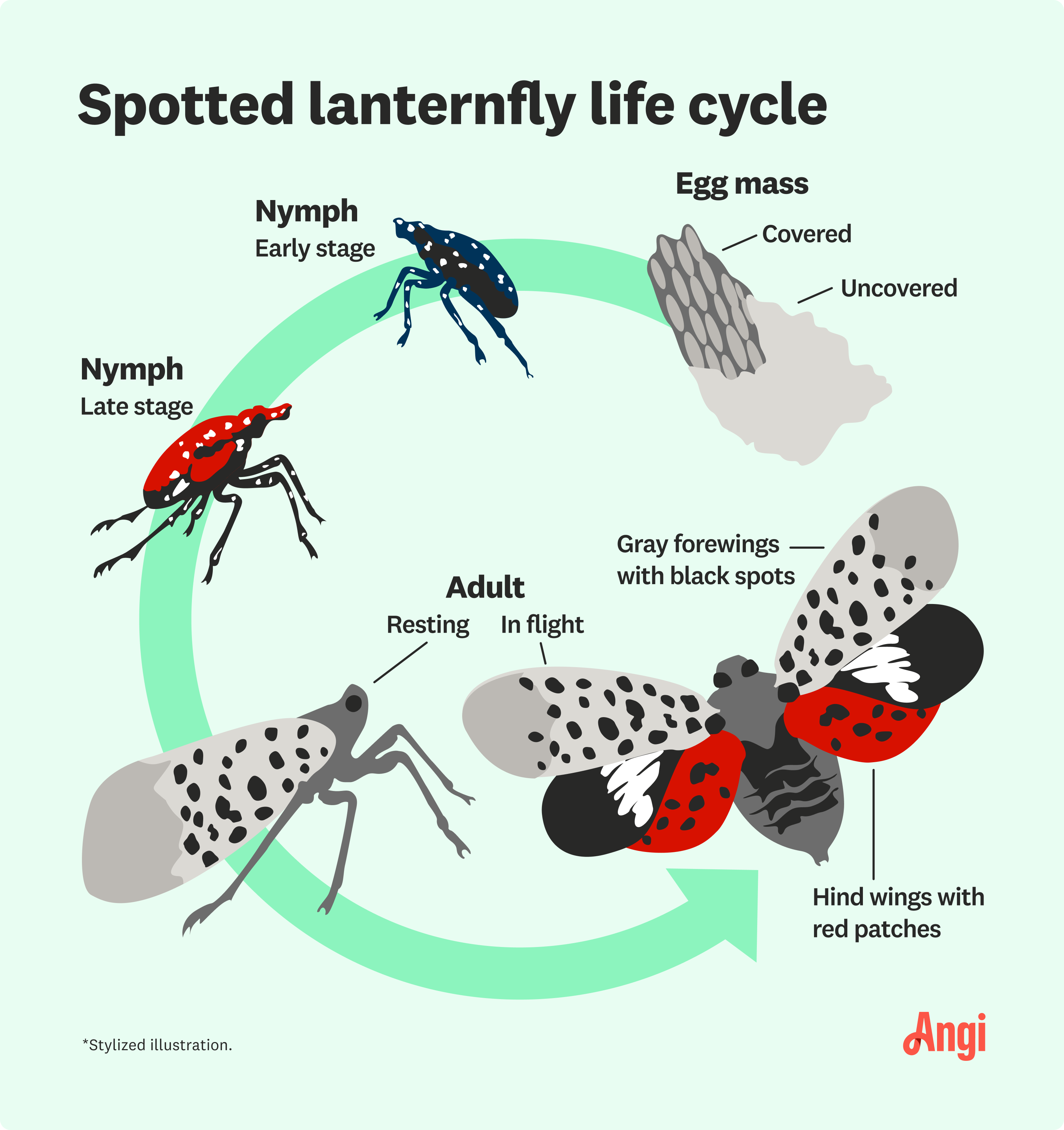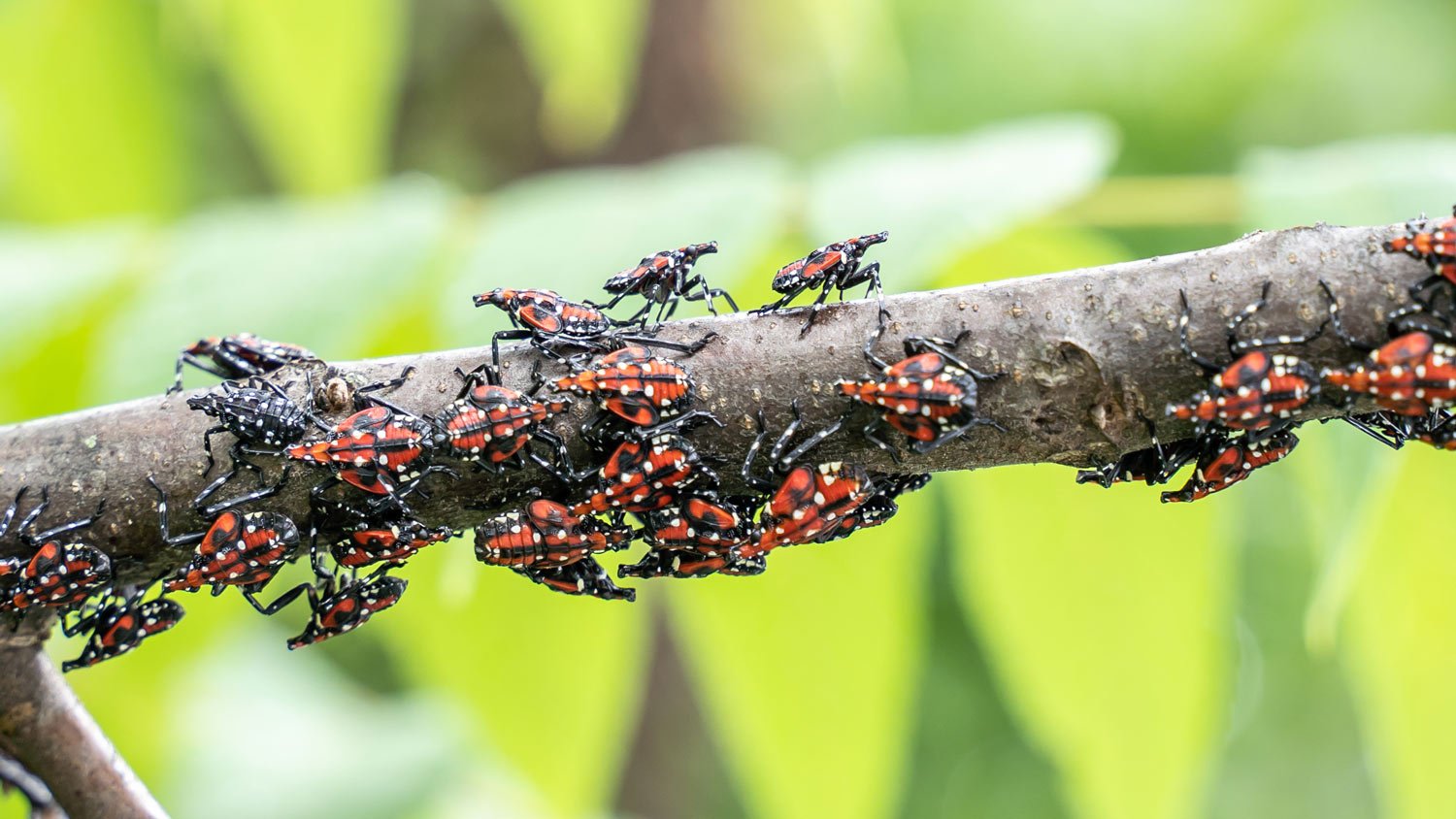
Whether you have bugs, bats, or rodents invading your home, you’ll want to contact an exterminator quickly. Find out how much pest control costs in Columbus, OH.
Spotted lanternfly treatment costs $300 on average, or between $200 and $600, depending on the number of trees and the type of treatment.


Treating your trees to prevent spotted lanternflies costs between $200 to $600 per treatment.
Systemic pesticides are the most common treatment and range between $250 and $1,000.
Spray pesticides are a more budget-friendly option, averaging $150 to $300, however are only topical treatments.
Ongoing preventative treatments range from $40 to $70 per month or $100 to $300 quarterly.
Spotted lanternfly treatment costs $300 on average, with prices ranging from $200 to $600. Despite the pretty polka dots, the spotted lanternfly isn’t enjoyable to have around your home. Luckily, if you’re dealing with these invasive insects, a bug control specialist can help.
The spotted lanternfly's impact goes beyond the sticky "honeydew" they excrete while feeding on tree sap. They can cause severe damage to trees, plants, and the ecosystem, devastating important agricultural regions such as vineyards and apple orchards. If you're feeling overwhelmed by these pests and are considering seeking professional help, this guide can help you plan your budget.

These are the main factors that can impact the cost of spotted lanternfly treatment.
| Treatment Type | Cost Range |
|---|---|
| Systemic Pesticides | $250–$1,000 |
| Spray Insecticides | $150–$300 |
The most common treatment for spotted lanternflies is systemic pesticides, which typically cost $250 to $1,000 or more. These chemicals are injected and travel internally throughout a tree, poisoning the sap and killing the insects as they feed. Different brands and types of pesticides have varying costs, so your budget is based on which one your bug control specialist uses.
Another option is spray insecticides, which cost significantly less, ranging from $150 to $300 per treatment. While this option is more budget-friendly, the insecticides are only a topical solution that will kill lanternflies on contact. Systemic pesticides, which continuously poison and kill new lanternflies, are a more effective and permanent solution.
The number of affected trees on your property can significantly impact your spotted lanternfly treatment cost. Your pest control specialist may charge a flat rate for a certain number of trees, or they may charge per tree. Note the size and number of trees on your property to get accurate price quotes while you’re shopping around.
Treating your trees against spotted lanternflies typically costs anywhere from $200 to $600 per treatment. Here’s what your overall cost could look like for multiple treatments.
| Number of Treatments | Average Total Cost |
|---|---|
| 1 | $200–$600 |
| 2 | $400–$1,200 |
| 3 | $600–$1,800 |
| 4 | $800–$2,400 |
| 5 | $1,000–$3,000 |
| 6 | $1,200–$3,600 |
| 7 | $1,400–$4,200 |
| 8 | $1,600–$4,800 |
| 9 | $1,800–$5,400 |
| 10 | $2,000–$6,000 |

Here are a few ongoing expenses to consider with your spotted lanternfly treatment cost.
Conducting regular inspections of your trees will cost you nothing but time, so it’s worth adding this preventative step to your routine. Look closely at your trees and scrape off any eggs and kill any bugs you find. Be sure to contact your local insect control specialist if you suspect the spotted lanternflies are taking over again.
Ongoing preventative visits from a pest control service cost around $40 to $70 per month or $100 to $300 quarterly. Even if you haven’t seen the spotted insects in a while, it’s a good idea to schedule regular inspections from a bug control specialist to keep them from coming back.
Hiring a local lanternfly treatment pro costs more upfront, but you benefit from safer application methods, correct product usage, and treatments that effectively target every stage of the insect’s life cycle. Pros bring the proper licenses, equipment, and knowledge needed to control an invasive pest without harming nearby plants, pets, or beneficial insects.
Treating spotted lanternflies involves identifying host plants, timing treatments correctly, and using regulated products safely. Here are some of the top reasons to work with a pro:
Professionals know how to inspect trees and shrubs for egg masses, nymph clusters, and adult feeding damage, ensuring the full infestation is addressed.
They are licensed to apply pesticides legally and safely, including systemic treatments and targeted sprays approved for lanternfly control.
A pro reduces the risk of harming desirable plants, pollinators, or surrounding landscapes by selecting the right products and application methods.
Many providers can bundle services such as egg mass scraping, tree band installation or replacement, and follow-up treatments for long-term suppression.
If you want to handle some tasks yourself, these DIY steps can help reduce time and labor costs:
Scrape and destroy lanternfly egg masses on trees, outdoor furniture, and hard surfaces during the fall and winter months.
Remove clutter and debris around your yard to make inspections and treatments easier for your technician.
Identify and note the trees or plants where you see the most lanternfly activity so your pro can target the right areas immediately.
If you’re dealing with other unwanted insects or arachnid invaders on your property, many bug control specialists offer discounted rates for bundling multiple treatments. Here are the average costs to consider for these add-on treatments:
Cost to exterminate ants: $100–$500
Cost to exterminate spiders: $100–$300
Cost to exterminate wasps: $100–$1,300
Cost to eliminate termites: $230–$2,500
Cost to remove mosquitos: $70–$500
Cost to exterminate cockroaches: $100–$600
Cost to exterminate fleas: $150–$400
Cost to exterminate bed bugs: $350–$5,000
The cost of spotted lanternfly treatment can get steep, especially if you need to treat multiple trees. Here are a few ways to save money and help prevent the spread of spotted lanternflies:
Get at least three different quotes from reputable insect control specialists before hiring pest control services.
Always check your vehicle and belongings for spotted lanternflies to avoid spreading the invasive insects or bringing them home, especially if you’re near a heavily wooded area.
If spotted lanternflies are invading your community, reach out to your local municipality to help control the insects in your area. States like New Jersey and Pennsylvania have government-funded programs to help towns and communities survey and treat spotted lanternfly infestations.
Let your pro know where you’ve seen the most lanternfly activity so they can plan the best treatment spots and tools.
Ask what types of treatments they use (chemical, natural, or both) and whether any may affect plants, pets, or outdoor furniture.
Discuss whether you need to prep the area first—such as clearing debris, trimming vegetation, or moving items away from walls.
Check whether follow-up visits are recommended and what those may cost, so you’re not surprised later.
If you have delicate landscaping or outdoor structures, mention them upfront so the technician can adjust their approach.
Home is the most important place on earth, which is why Angi has helped more than 150 million homeowners transform their houses into homes they adore. To help homeowners with their next project, Angi provides readers with the most accurate cost data and upholds strict editorial standards. We extensively research project costs to develop the pricing data you see, so you can make the best decisions for you and your home. We rely on reputable sources, including the U.S. Bureau of Labor Statistics, academic journals, market studies, and interviews with industry experts—all to ensure our prices reflect real-world projects.
Want to help us improve our cost data? Send us a recent project quote to [email protected]. Quotes and personal information will not be shared publicly.
From average costs to expert advice, get all the answers you need to get your job done.

Whether you have bugs, bats, or rodents invading your home, you’ll want to contact an exterminator quickly. Find out how much pest control costs in Columbus, OH.

Professional spider exterminator costs vary depending on the infestation size, visit frequency, and methods. Use this guide to budget for speedy spider removal.

Find out how much it costs to remove armadillos and stop them from coming back. Know how much to budget to humanely remove these pesky critters from your yard.

Learn how to check for bed bugs in your home, what to do if you find them, and how to prevent them from returning in this handy DIY guide.

Roof rats can damage your home and potentially spread diseases and bacteria. Learn how to get rid of roof rats and keep them from coming back.

There's no one simple trick for getting rid of fleas in your house. But when you come at them from all angles, it's easy to send fleas packing for good.